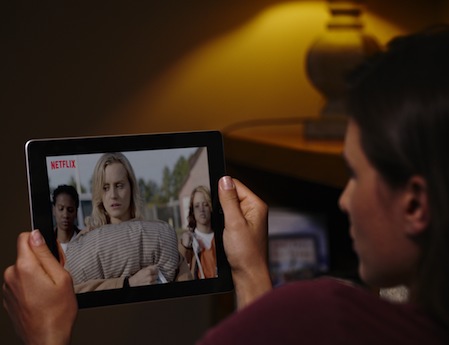Guest Blog: How OTT Hides Television’s Revolution

The first use I can find of “over the top” is a 2005 article in which Diane Mermigas quotes an investment banking firm report identifying companies such as Apple, Skype and Vonage as having “built strong business models based on Internet protocol technology, ‘riding over the top’ of networks built and managed by cable and telecom service providers.” Since then, OTT has joined an array of acronyms central to the vernacular of the industry. Conferences and reports on the state of OTT abound and seem to multiply by the week.
OTT is a curiously vague acronym. If you’ve ever tried to explain it to someone outside the business, the typical response is “over the top of what?” But beyond the limits of its imprecision, continuing to rely on OTT to describe the development of broadband distribution of video has obscured what has actually happened to the television industries: Broadband has emerged as a technology for distributing television content.
Related: Half of U.S. Homes Have Streaming VOD
Only once HBO Go and Netflix streamed pristine, long-form content within seconds of demand in 2010 did it begin to become clear that much of what we thought we knew of television wasn’t about television at all but about broadcast distributed television. Broadcast signals are technologically scarce and limited and require a single message be sent from one to many. That scarcity required a “schedule” of programming, it led to the early emphasis on liveness, and an experience of television in which one bit flows into the next. And though cable may have differed somewhat as a distribution technology, it adopted practices created in response to broadcast’s technological specifications. These conventions became so entrenched in our experience that we believed they were norms of the medium of television. But they are not characteristic of television, just television according to broadcast technology. It is no wonder so many were certain of the coming death of television—broadband distribution seemed to unmoor television from traits believed intrinsic to it.
Digitization and “new media” are no longer coming; they’ve arrived. The result has not been the death of television, but its profound evolution, maybe even revolution. The persistence of the terminology of OTT suggests separate worlds of television that are clearly intertwined. Just as cable emerged as a related but distinct business from broadcasting, so too has broadband distributed television joined the competitive fray.
The focus on the abstract notion of OTT has slowed leadership on the real and important transition—one worthy of the summits, blog posts, and articles OTT continues to receive. Broadband distribution enables forms and experiences of television impossible for previous mechanisms of delivery. Most crucially, broadband distribution enables personalized delivery of content. It turns the old model of a single entity sending out one show to everyone on its head and allows viewers to select what and when to watch beyond the confines of a linear schedule. It requires rethinking nearly all aspects of making and experiencing television.
Related: Online Subscribers Eager to Pay More for ‘Extras'
Broadband’s different technological capabilities allow it to cast off characteristics designed to cope with the scarcity of broadcasting and redefine the experience of television as personalized and on demand while also enabling other foundational changes to the business. Many of the most successful broadband video distribution services have opted for a business model different from the advertiser-funded system that dominated broadcast and much of cable television. Subscriber-funded television is a wholly different business from advertiser-supported television.
Not talking about the evolution of television as a change in delivery mechanism has obscured real understanding of industry change, and thinking about all broadband-delivered content—regardless of business model—as simply “OTT” misses meaningful differences. YouTube and Netflix may both deliver video over broadband, but the nature of their content and varied business models may warrant understanding them as competing in different industries. Likewise, Netflix and HBO may be distributed over different technologies but are more like each other than different.
Most all of the “normal” practices of broadcasters and cable channels resulted from the capabilities and limitations of their distribution technology that required pushing a linear schedule of shows organized by channels to viewers. But today’s leaders aren’t looking back at that playbook. They’re asking how else can television be organized? Be made? What business models better fit the experience of television viewers want and broadband distribution enables? These are big questions requiring bold thought leadership, not another report of how many Millenials are watching YouTube or a debate about the merits of HBO versus Netflix.
There is no such thing as OTT, and television isn’t dying. Just as radio was forced to transform itself from its reliance on a network schedule upon the arrival of television in the 1950s, so too must television industries tied to different distribution technologies wrestle with their limitations and capabilities in the face of a transforming competitive landscape. The creation of studio portals such as CBS All Access and HBO Now that connect studios with audiences without layers of middlemen illustrate the opportunities available for legacy content creators. Allowing viewers to decide how to watch and providing choice in how to pay reinvigorates the legacy television industry as the business of television expands beyond broadcast and cable distribution technologies to include broadband as well.
Amanda Lotz is author of The Television Will Be Revolutionized and a professor at the University of Michigan.
Broadcasting & Cable Newsletter
The smarter way to stay on top of broadcasting and cable industry. Sign up below
